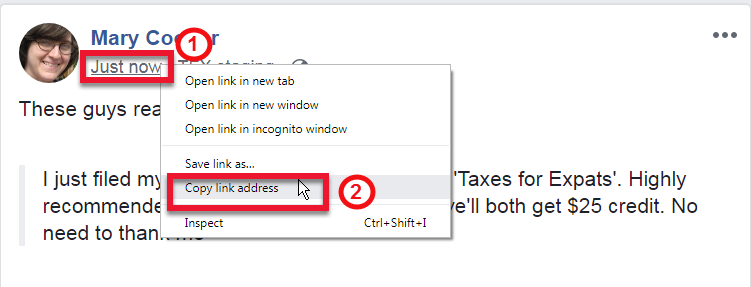
Although social media writing can be different than other types of writing, there are some rules that you need to follow. You have many tools to assist you with your social media writing. Learn about the various types of writing and how to practice them. Practice makes perfect! You can push the boundaries and get to understand the community. Then, you can experiment with various types of content and then use them to your advantage.
Social media platforms: Rules for writing
A social media presence will help you gain more followers, brand recognition, and even convert customers to visitors. Unlike other content channels, writing for social media has certain rules that you should follow to make your posts stand out. These rules are essential for reaching a target audience that is both savvy but also immune to your message. These tips will assist you in creating content that grabs attention and gets your message across.

Follow the social media guidelines of your particular platform. For example, Twitter does not allow users to share private photos of their friends. Use the correct hashtags to identify your posts. For handle names and names, use inclusive pronouns, such as they. You should spell hashtags correctly, and put them in title case to make them easy to read. Be inclusive on social media and insist that your business is a positive role model.
Types for writing on social media platforms
Copywriting for social media is a matter of understanding the purpose. Twitter, for example is used to communicate timely news. LinkedIn is for professional networking. The copy elements, such as CTAs, word counts and lengths of captions will also differ. If you don't take this into consideration, your Facebook followers may ask for your content to be retweeted or tag your Instagram handle.
Social media strategies should reach a targeted audience. Writing for social media requires focus, creativity, and an intimate understanding of your audience. Your audience will make your posts the most engaging. By following these guidelines, you will be able to write for your audience. As always, have fun. Make sure to keep your tone light and engaging. Don't forget hashtags!
Writers can use tools to create content for social media
Although the Word built-in spelling tester will pick up mistakes, it won't be able to tell you why. For plagiarism detection, Help.PlagTracker is a good option. This service will help you identify any errors in your content and give you detailed feedback. These tools have many benefits. These are the top benefits. Let's take a look at how these tools can improve your writing for social media.

A tool is essential to polish your social media posts. The entire process can be made easier by using a tool to edit the content. Most social media writing tools allow you to send it to five different editors for review. Although editing social media content is often difficult, having someone else check it out can ensure it is polished and professional. This can make all the difference in your social media marketing campaign's success or failure.
FAQ
What is Content Marketing Strategy?
Content Marketing Strategy provides you with access to data you don't normally have. This data allows you to measure which types of content perform better than others.
It allows you to identify the most effective strategies to drive more visitors to your site. It provides insight into your audience's behavior, which can help you create better content.
This means you can spend less time worrying about what kind of content works and more time focusing on what doesn't.
A Content Marketing Strategy also helps you analyze what messages resonate most with your audience.
Analyzing these messages will help you determine what content your customers prefer. So you can create similar pieces of content and keep those successful ideas going.
Finally, a Content Marketing Strategy will help you track how your content performs. You can quickly see which types of content converts best by sharing them more.
A Content Marketing Strategy can be summarized as the key to ensuring that your content performs well.
Is Content Marketing right to me?
Absolutely! You can use content marketing for any business. No matter whether you sell products, provide support or offer training, creating content can help customers get to know your company better and keep them in touch.
How long should I expect my content marketing campaign to last?
This varies depending on the industry and type of product or service offered.
You might spend a month designing a new style of shoe if you're selling shoes. For example, you might launch the product in August and keep updating it throughout year.
If you are selling clothing, one look might be for spring and one for fall. You want to keep your customers interested by offering something new every day.
Your goals will determine how long your content marketing program can last. You may only need one channel for small businesses. You may need multiple channels for larger companies to reach a wide audience.
What role does a content strategist play?
A content strategist can help you to understand what people are searching for online. They make sure your website is optimized for search engines to help you rank high. They also write content for social media websites like Facebook or Twitter. And they write copy for websites, blogs, and advertisements.
Content strategists work closely with marketing teams and help to create a coherent plan for company's online presence. While content strategists can work alone, they will often collaborate with other members of the team to ensure each piece of content is useful.
Do I need to hire a writer for my Content Marketing?
No! To produce content for your business, you don't necessarily need to hire a professional author. There are tons of free resources out there that can help you get started.
Statistics
- Measure your goals with a progress indicator of 0-100%. Make your goals collaborative and transparent (semrush.com)
- According to our research, 65% of companies with very successful content marketing in 2021 ran content audits at least twice a year. (semrush.com)
- To further show the importance of this, 89% of people have stopped doing business with a company because of a poor experience. (neilpatel.com)
- Progress indicators (0–100%) allow each team member to see how attainable each goal is and understand what remains to be accomplished. (semrush.com)
- An example of an overarching goal could be: "In 2022, we want to achieve a 20% increase in revenue created by organic content and generate 15,000 MQLs with a budget of $30,000." (semrush.com)
- According to the Content Marketing Institute, 70% of B2B marketers and 86% of B2C marketers surveyed use content marketing in some form or other. (criteo.com)
- Out of the 1,500 marketers we surveyed for our State of Content Marketing report, 78% who felt their content marketing strategy was exceptionally effective in 2021 had documented their strategy. (semrush.com)
- According to research compiled by Coschedule: Companies that publish 16+ blog posts a month get as much as 3.5x as much traffic as those that publish 0-4 posts a month. (criteo.com)
External Links
How To
Content Marketing Tips: Infographic Creation Tips
Infographics are one of the most effective ways to explain complex concepts simply, making information easy to understand. You should use infographics to spread the message about content marketing.
For creating an infographic you'll need software such as Adobe Illustrator and Photoshop. These programs can be used to create different shapes and elements that represent your data. Then, you can add colors and fonts to make it look great. Once your design has been created, you can start uploading images from Unsplash/Pixabay to incorporate into it.
Check out existing infographics online to get some ideas. If you want to show calories in certain foods, then you can take a picture or diagram of a food pyramid, and add pictures of the foods. You might also want to calculate how many calories are in soda pop. This can be done by taking a picture with a bottle of Coke.
Once you have designed your infographic you can share it via social media channels, such as Facebook or Twitter. This helps people who aren't familiar with the concept learn about it. Use hashtags to let others know what infographic you are sharing on social media. Users can follow along with specific conversations using hashtags.
If you decide to create an infographic, try making your posts shorter than usual. A blog post may be 2000-5000 words long. An infographic requires only 500-1000 words. This allows you to convey more information in a smaller space.
Keep in mind that viewers may have difficulty reading small fonts when creating your infographic. Use large fonts, but don't overuse color in your infographics. Also, ensure all text is legible.
These are additional tips:
-
Choose an Infographic Template. There are many free templates available online and in printable formats. Canva, Piktochart or Google Slides are three of the most well-known templates.
-
Create your Infographic. You can use the template to create your infographic. Any media you choose is acceptable for your audience. An example of this is a infographic that shows the best restaurants in Seattle.
-
Add Text. Add text once your infographic is created.
-
Add images. You can also add images to your infographic. These images can be charts, graphs, icons, or pictures. If you wish to include a picture, ensure it is relevant.
-
Make It Interactive. You can add interactive elements, such as maps, buttons, and links. This will engage your audience.
-
Share. Share your infographic with others on social media such as Facebook, Twitter and LinkedIn.
-
Measure. What was the performance of your infographic? Did people click through? Did they sign up to your email list? Was your infographic received well by them?
-
Improve. Is there anything you can do to improve your infographic Is there anything you could do better?
-
Repeat. Do it again.